What happens when you take elements of Stardew Valley, Rune Factory, Animal Crossing and mix them all together with some additional mechanics? You get Fae Farm.
My love of life-sim/farm sim RPGs are well documented at this point. There’s something cathartic in the simpleness of the concept (and repetitive nature involved), along with that overall sense of calm. It’s not all tension and fighting to prevent the world from ending (unless you’re playing Harvestella), but rather the about finding the joy in menial tasks and making steady progress.
Fae Farm
Developed By: Phoenix Labs
Platforms: Nintendo Switch and PCs
Release Date: September 8, 2023
The genre has seen a fairly big boom in recent years, with several new titles launching around the year. While most are “okay” or passable, only a few manage to stand out. To rise above the deluge (when you’re not part of a long-standing franchise) these games need to either: have a solid hook that changes the formula, or have the basics so refined the addiction is almost instant. Fae Farm manages both.
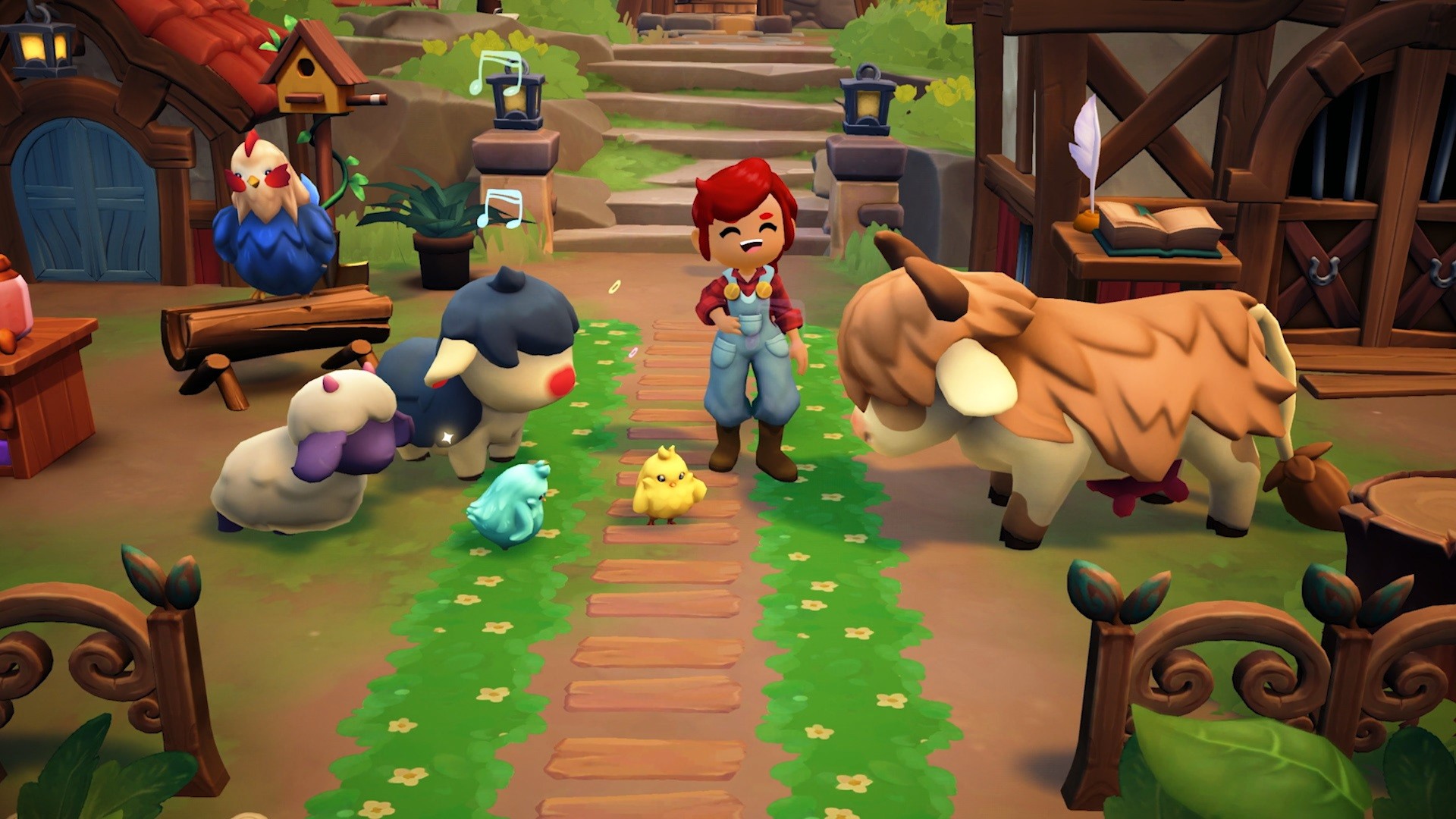
Home on the Range
Stop me if you’ve heard this before. A person seeking a change embarks on a journey and finds themselves in a new location filled with all manner of townsfolk and creatures. It just so happens they have a farmstead going unused (and untended) they’re more than happy to let you live in as they welcome you into their community and begin asking you for favors. As your skills increase you’re able to improve your home, craft various items, and explore dangerous dungeons…
Fae Farm isn’t exactly breaking the mold when it comes to the basic setup for the game and the story that enfolds. It treads plenty of familiar territory, but that’s okay! As such, I won’t be really diving into the overall story of the game in this review. Instead, lets talk about the different gameplay elements/mechanics and how this title changes things up:
Mysticism – The most unique aspect to Fae Farm is it’s fantastical setting. The land of Azoria is yours to explore. As you play through the story, meet new people, and increase your skills you’ll eventually encounter magical realms and mythical creatures. As the world expands, more characters begin to populate it (some who are of the Fae themselves). The result is a farm sim that starts off fairly “basic” morphs into a unique world filled with all manner of things to keep you engaged.
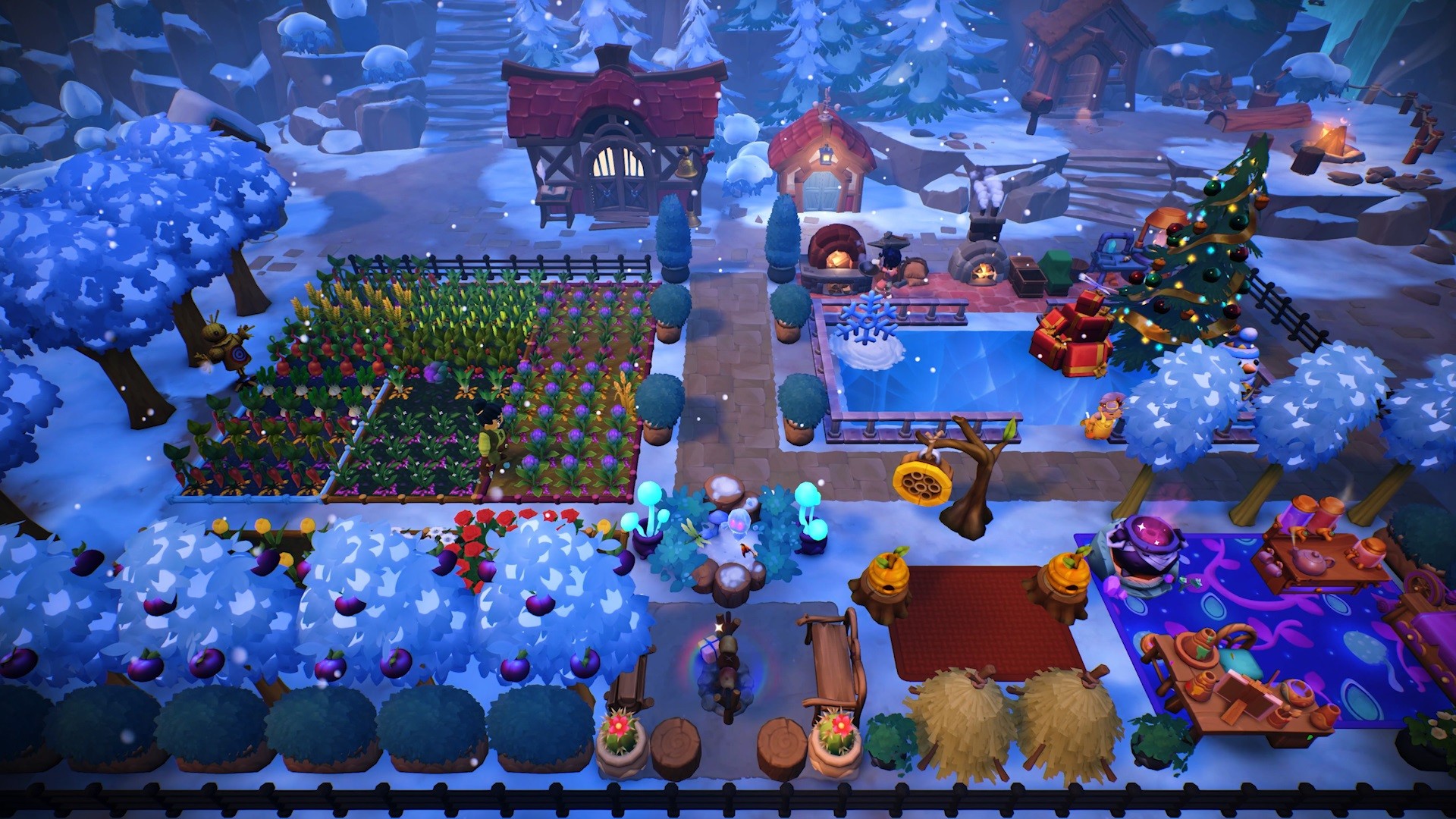
Farming – Your actual farm and field land is laid out a bit different this time around. Mainly, you won’t actually be PLOWING the fields like you normally would. Yes, there’s still a gridded out section of land in front of your house but it’s set to blend in with the rest of the surroundings. It’s not all “farm land” that can only be used for that purpose.
Instead, you have to craft plots of soil in order to plant seeds and grow crops. Crafting one plot at a time, you have tons of flexibility in how you lay things out. They don’t have to be simple square/rectangular fields. Instead you can put things exactly how you want, and use the surrounding land for other stuff (fences, decorations, trees, etc).
Even better, you can “reclaim” any plot of soil you put down and replace it elsewhere if you decide it needs to be moved! On top of that, as you continue to play, you’ll eventually be able to unlock/craft different types of soil plots. So you can have soil geared towards specific seasons, meaning you can grow certain crops during any time of year.
This change up is a relatively simple one and nothing too outside the norm. Yet it opens up the customization aspect in a number of cool ways.
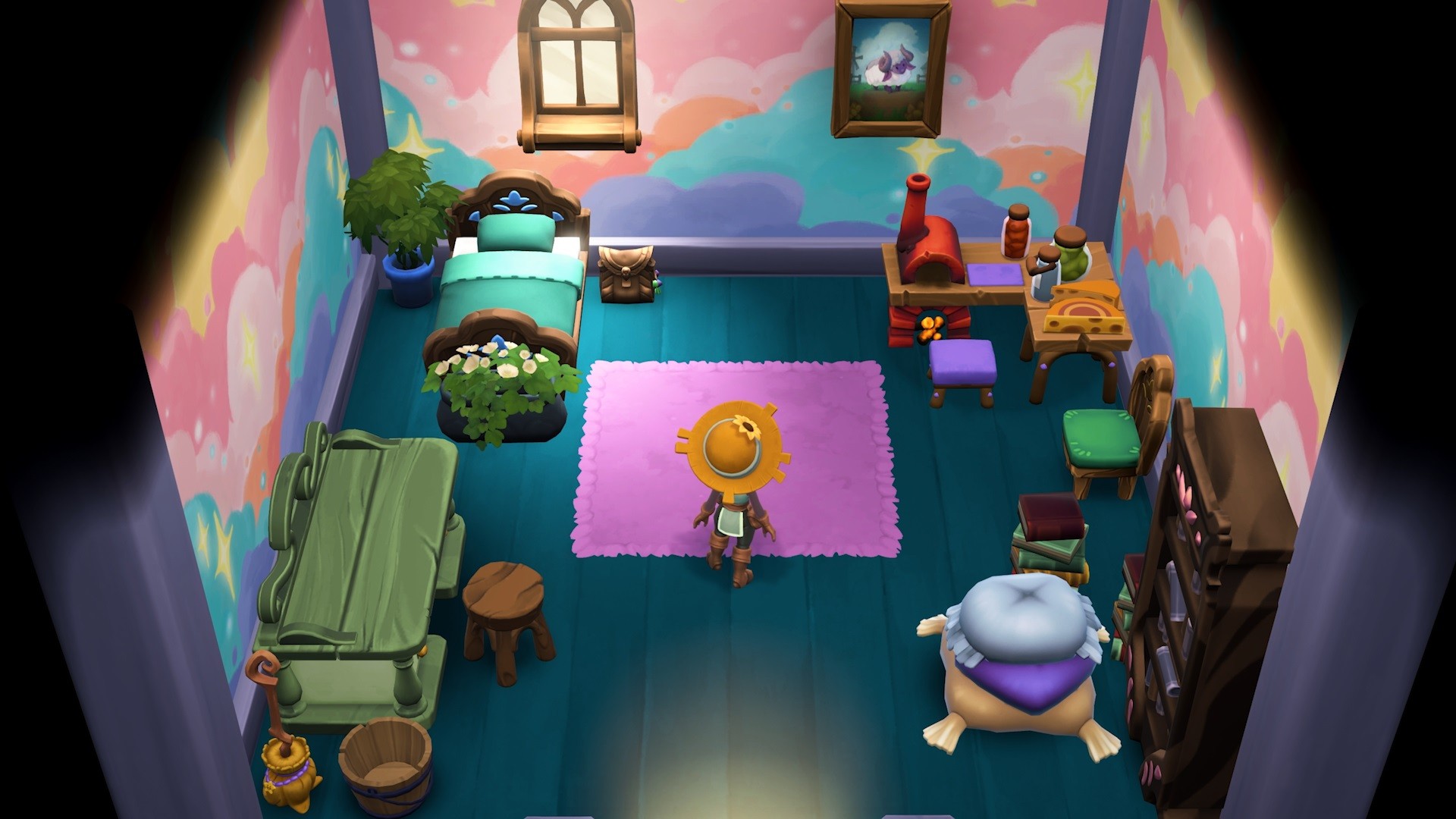
Clearing it Out – Speaking of your field…Generally speaking, clearing the area around your farm (rocks, trees, overgrown weeds, which you use a crafting materials) is no different than most other games. Some things require tools to be upgraded and such, but the basics are the same.
What’s neat, however, is that these things aren’t limited to only your farm area. You can clear out these things all around the island; in much the same way you do in Animal Crossing. Hell, some of the materials you need to craft basic necessities can only be found in certain areas of the island (head to the beach for sand).
Selling – Selling the items you acquire, or the crops you grow is a bit different too. Instead of the traditional shipping box, Fae Farm makes you actually “go to market” to sell your wares. Don’t worry, you won’t be trying to convince buyers or anything. You’ll head to a set of tables where you can place the items you want to sell and they’ll automatically be sold when you go to sleep and the process starts again.
It’s not all that different from how games in this genre normally handle the process, but it essentially forces you to go out and engage with the town around you. That said, you will eventually be able to built your own fruit/veggie stands to sell stuff directly from your farm. At that point, however, it just feels like extra space for making money.
Again, a subtle thing, but one that surprisingly changed the way I played.

Dungeons – Exploring dungeons is relatively straightforward. You work your way through, level by level, harvesting the resources on each floor and taking out enemies. Every time you exit, you’ll be placed back at the top floor (unless you craft seals that allow you to return where you left). As your fighting skills, and stamina, increase you’ll be able to make it farther and uncover even better crafting materials!
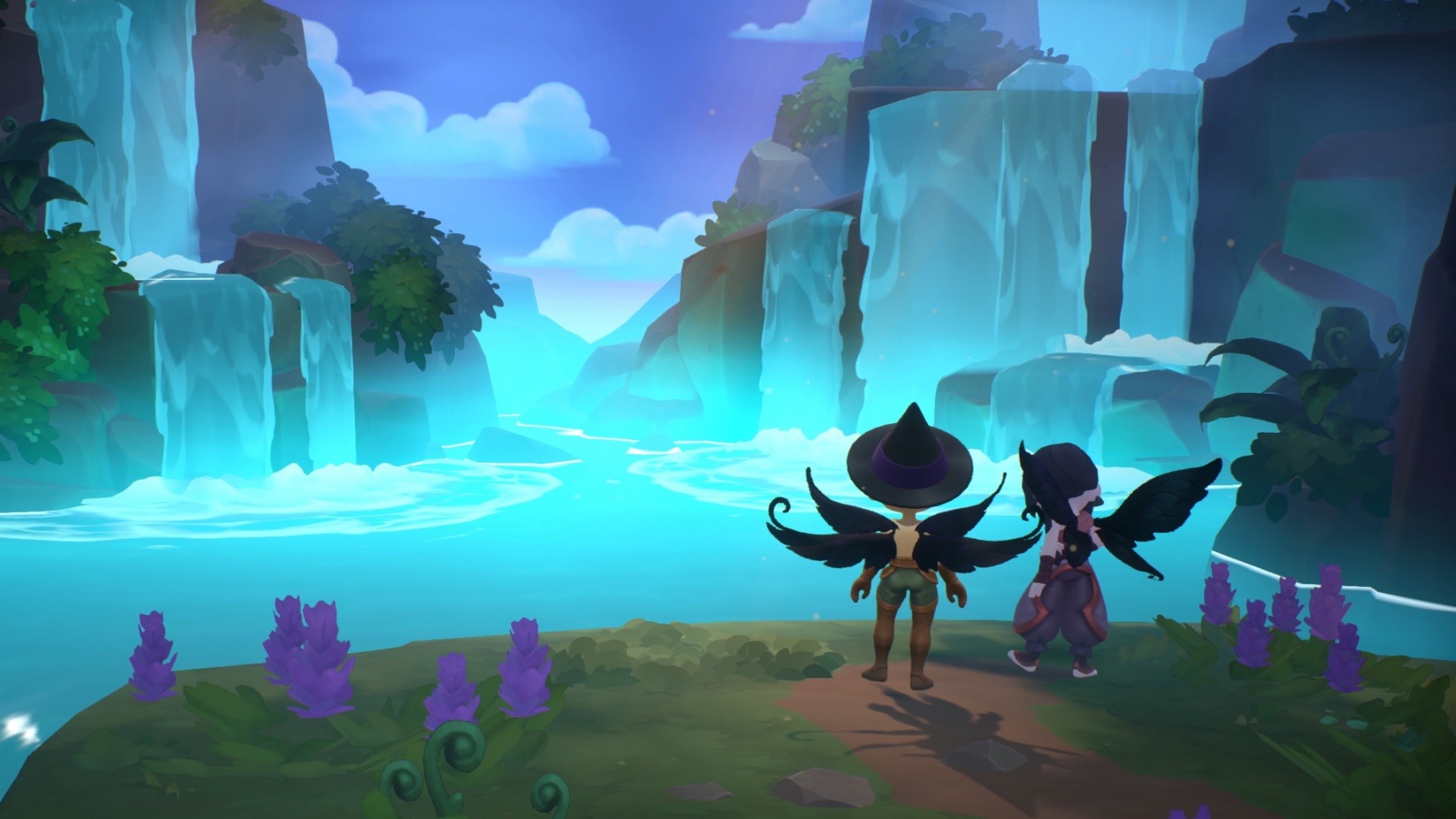
Romance – Nothing too fancy on this end, but yes you CAN romance townspeople and build up friendships with them. It’s a feature many look for but not always present!
Crafting – This mechanic is a smidge different in that you’re able to start building things right off the bat. There’s no waiting for a crafting table or anything like that. Instead, there’s a whole crafting panel you access (both inside your home and outside) bringing up all the options for making things based off the recipes you acquire.
The way Fae Farm approaches the things you craft feels very much like Animal Crossing (without the crafting bench that is), and far more expansive than your typical farm sim allows. Everything from flooring, to walls, decorations, and equipment you’ll need to craft more stuff, the sky feels like the limit on what you can make. Even in just the opening chapters, the amount of decorating/customization I was able to do within my house (and the island), felt substantial.
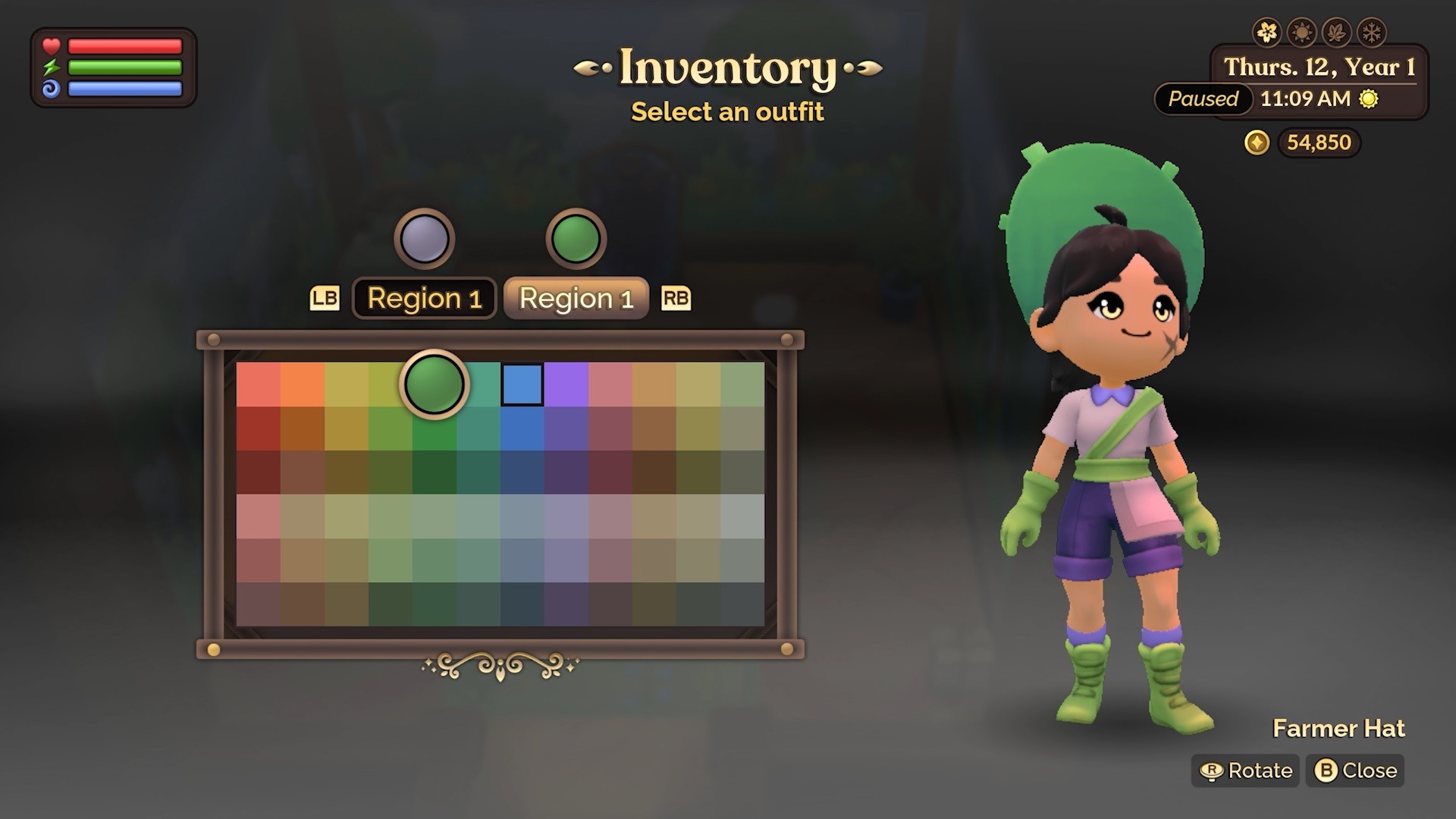
Smooth Interface
All around, being able to do the things you want to around the island, is simple and quick. You have a set of tools mapped to a general action button to tend your farm and harvest stuff around the island. These (blessed) pop up automatically depending on what you’re facing. Standing near a rock? Hitting the action button automatically has you swinging the pickax. In front of a tree? Boom, here’s your axe to chop it down…and so on.
While it’s not the first of these farm/life sims to do such a thing, it makes diving into the action and getting to the fun a lot easier. Manually swapping necessary tools for minor tasks, that may take less time than it does to equip the tool (sometimes you only want to smash one small rock!), can be a pain. Here, you don’t even have to think about it.

While the regular farming tools are all grouped together, there are times where you’ll have to change up what you’re character is holding. You can swap out your tools to a fishing rod, magic staff (used for combat and more), and your net for catching critters. This is handled via the shoulder buttons, so changing your equipped item is a breeze.
All around, I was fairly impressed with how smooth the layout/user interface was. No one ever really considers these kind of games “hard,” but there can be some difficulty when it comes to understanding the basics of playing. Hell, despite the ridiculous amount of hours I’ve put into Stardew Valley, it still takes me a bit to get a handle on the controls when I come back to it.
That’s not to say they’re prohibitively hard (some in this genre sure can be), but Fae Farm makes figuring out the gameplay feel almost intuitive. Within minutes of dropping onto the island, you’re crafting items, foraging, and fishing like you were born to it. While the first few chapters essentially serve as a tutorial for players, the ease of the controls means more of the focus is on learning about the world, characters, and all the many things you can do.

Making the Familiar, Fresh
The ability of Fae Farm to take familiar mechanics and add to them—or simply alter how they’re executed (like how selling is done)—is a major factor in its appeal. It’s easier for newcomers to get into the action, while giving long-time players of these games enough newness to justify picking it up.
You’re given all the standard tools/equipment, but how you access them is different (like the aforementioned fields/plotting). You can fish, but each capture brings its own minigame-esque challenges because you have to reel things in differently and mind the line tension (though you can switch to “easy fishing” in the accessibility options). Even how you take care of animals feels unique.
It’s new enough to not feel repetitive for players, but offers enough familiarity to get you addicted almost instantly. There is one more “slight” change I feel needs to be mentioned…This may feel like such a strange mechanic to highlight, but it legitimately blew my mind and opened up the game in surprising ways. I’m talking about jumping.
Yes, jumping. It’s such a simple and basic video game mechanic, but not one that’s widely used in these life sim games. It’s implementation here in Fae Farm makes me never want to go back. Namely, because it opens up travel and makes getting around the island significantly more exciting.
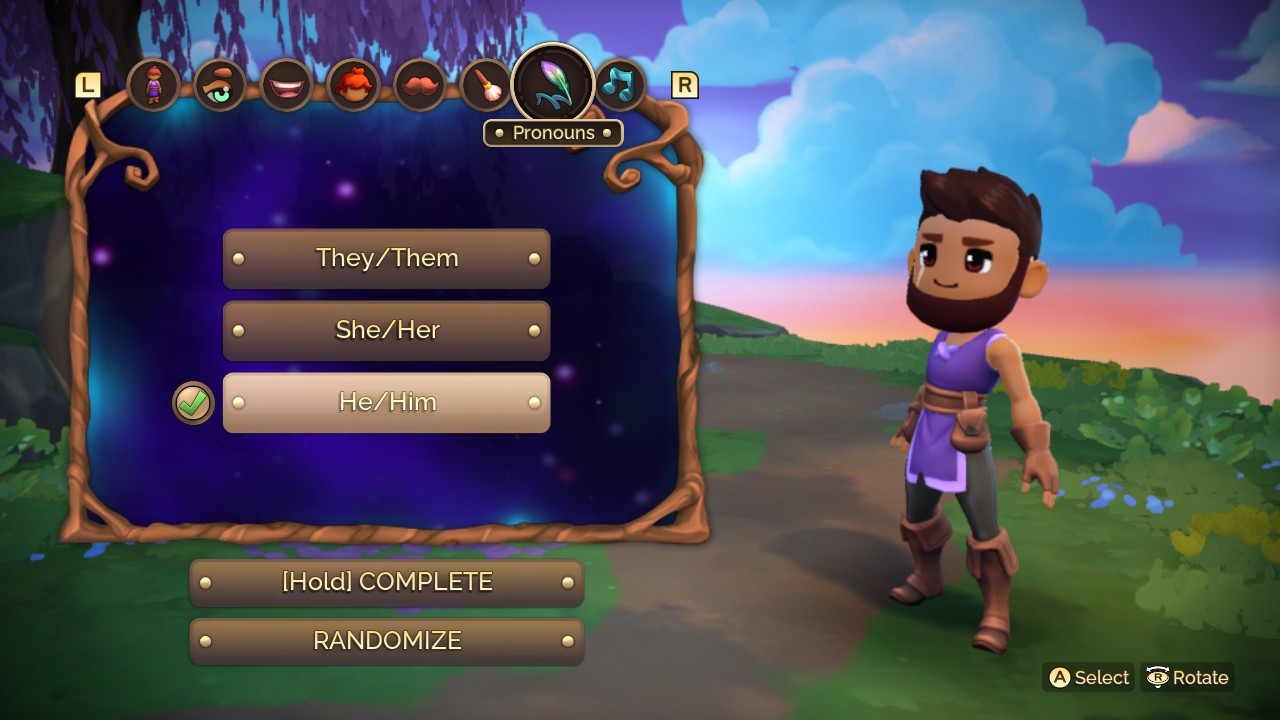
It’s-A-Me!
I’ve jumped in these kinds of games before, but Fae Farm takes it almost to platforming levels with how high/far you can go. Why run down a flight of stairs when you can leap over the edge of a cliff (there’s no fall damage so go nuts). Even better, the map doesn’t really have any “invisible walls” to restrict you either. Generally speaking, if you see a location, you can jump around to it.
From the tops of buildings/balconies to the top of hills, and even into the various sources of water (you can SWIM!), Fae Farm gives you tons of freedom to explore your island locale. It took me completely by surprise. When the game prompted me to try out the jump button, I had fun bouncing around, but figured it wasn’t anything too special….
Until I was going up a flight of stairs and hit the jump button while my character was angled just a little bit. Rather than coming up against an invisible barrier that would keep me on the noted path, I flew over the railing and landed on top of someone’s rooftop balcony. I simply stood there for a bit, coming to terms with my newfound freedom of traversal.
It’s a small thing in many ways, but also changed the game for me entirely. There are some sections of the island blocked off that you can unlock down the road. But the game also gives you some freedom to sneak around those if you can get your platforming skills just right.
More than anything it encouraged me to explore way more than I normally do in these games. This is necessary as the island is littered with recipes/instructions for different things you can craft and place in your home. Some of them are in really hard to reach spots, and while I’ve found a bunch, I know there’s even more hidden.
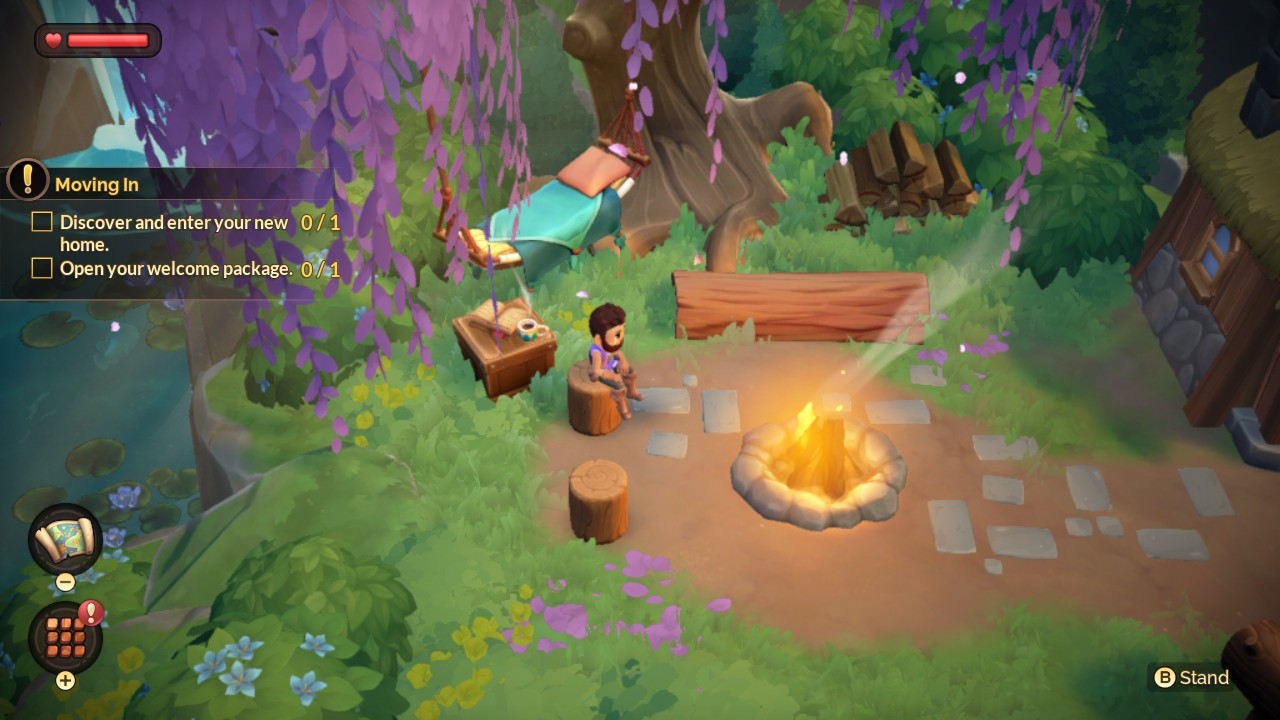
Tidbits
If I haven’t been clear enough…I’m addicted to Fae Farm. Within the first 20 minutes, I was hooked and knew I wouldn’t be putting it down any time soon. That said, there are a couple minor things worth mentioning.
Map – For lack of a better phrase, the map kinda sucks. When you pull up the map, it shows you the island, and which section of the town different villagers are. The problem, is it just lumps them all together in those sections, and there’s no insight into WHERE in those areas they might be. Once a character crosses whatever invisible border separates these areas, the map automatically marks them in the center of that section. So you still have to wander around.
Worse, the maps treats your character in the same way. There were a handful of times early on where I felt lost and looked to see where I was on the map in order to reorient myself…Because it centered me in a section (sometimes one I didn’t even realize I’d entered), it was very little help in pinpointing my specific location.
The result is essentially having something akin to a printed out map. It’s useful generally speaking for landmarks and such, but nothing beyond that.
Stutter – I’m not sure how common this issue might be, but I didn’t notice the game “freezing” and stuttering a few times in my playthrough. Normally this happened when first opening up the game on the Switch from sleep mode, or entering buildings where a loading screen happens.
It doesn’t last long, but has been fairly consistent in the couple weeks I’ve been playing. It’s not a deal-breaker by any means, but certainly something worth notating (and hopefully it gets patched out down the road).
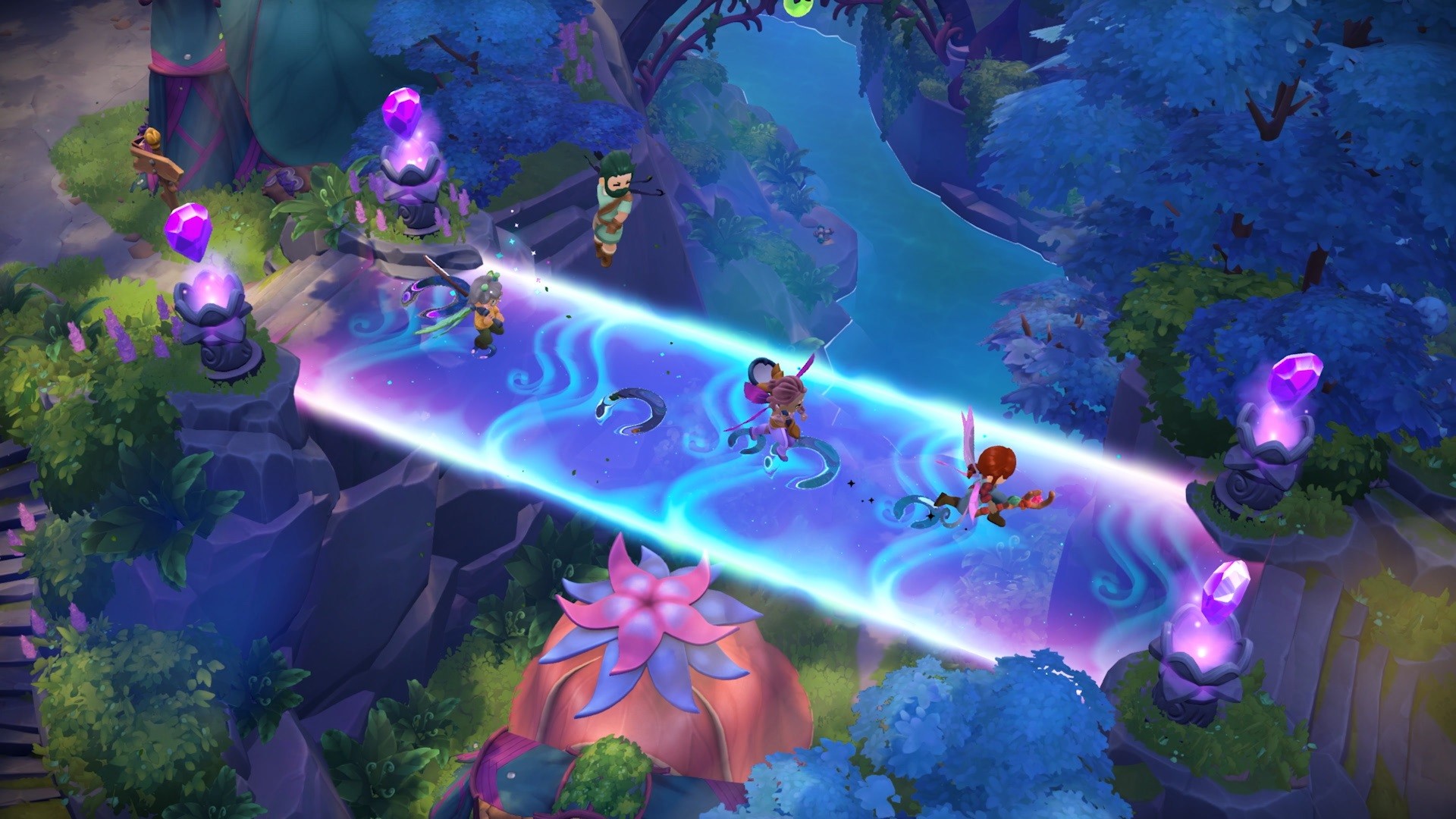
Multiplayer – Fae Farm allows you to enjoy the adventure with friends. Since I played it so early I really didn’t get the chance to mess around with that function, so cannot really talk about it. Could be awesome, I’m just not sure at the time of this posting.

